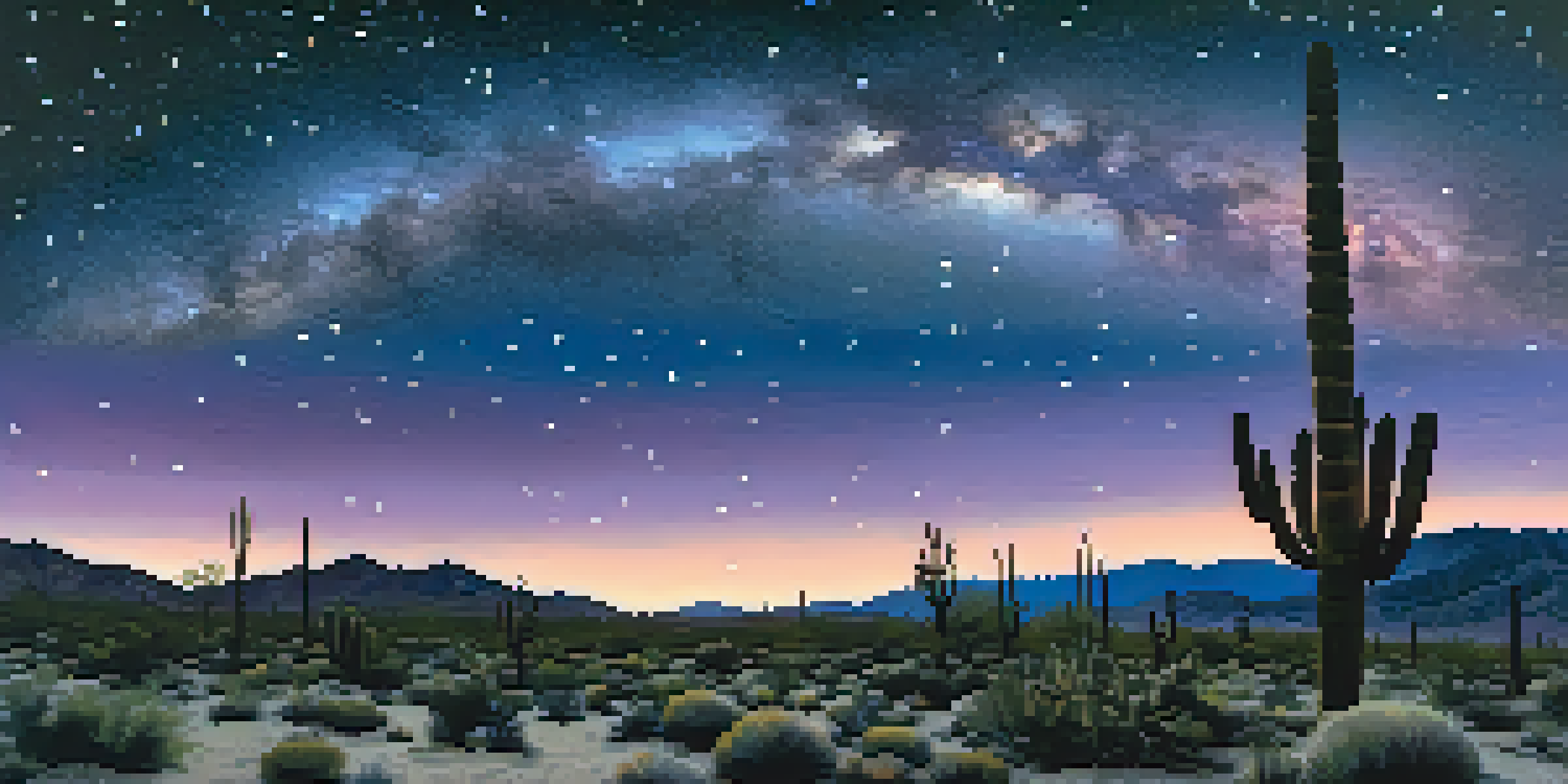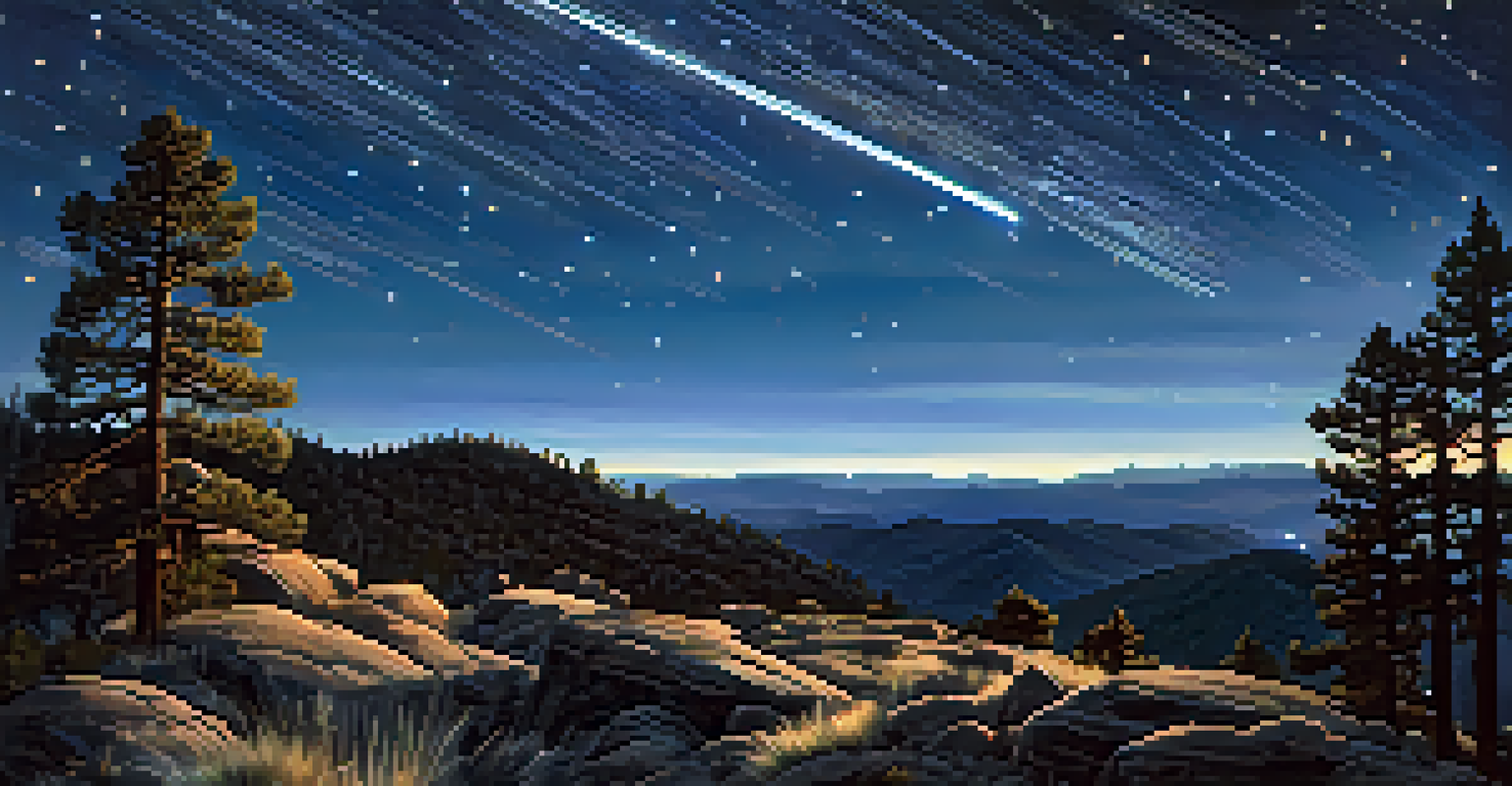The Ultimate Guide to Stargazing in San Diego County

Why San Diego County is Perfect for Stargazing
San Diego County boasts a unique blend of coastal and desert landscapes, making it an excellent destination for stargazing. With its diverse terrain, you can find the perfect backdrop for a night under the stars, whether you're near the ocean or in the mountains. The region's mild climate also means you can enjoy clear skies for much of the year, enhancing your stargazing experience.
The stars are not wanted now; put out every one; pack up the moon and dismantle the sun. Pour away the sky and sweep up the wood. For nothing now can ever come to any good.
One of the main reasons San Diego shines for stargazing is its low light pollution, especially when you venture away from the city. Areas like Anza-Borrego Desert State Park and Mount Laguna offer dark skies that allow you to see celestial wonders without the interference of city lights. This accessibility to pristine views makes it a favorite among amateur astronomers and casual stargazers alike.
Furthermore, San Diego's rich cultural backdrop often hosts astronomy events, star parties, and educational programs throughout the year. These events not only provide you with the gear and knowledge to enhance your experience but also connect you with fellow enthusiasts who share your passion for the night sky.
Best Stargazing Locations in San Diego County
When it comes to stargazing, location is key. Some of the top spots in San Diego County include the aforementioned Anza-Borrego Desert State Park, where vast open spaces allow for stunning views. Other notable locations include Mount Helix and Cuyamaca Rancho State Park, both offering elevated vantage points that lift you closer to the stars.

If you prefer the coastline, don't miss La Jolla's Torrey Pines State Natural Reserve. Here, the combination of ocean views and dark skies makes for a magical stargazing experience. Each of these spots provides a unique atmosphere, whether you're looking for solitude in the desert or a scenic ocean backdrop.
Ideal Stargazing Locations Abound
San Diego County offers diverse stargazing spots like Anza-Borrego Desert State Park and La Jolla's Torrey Pines, each providing unique celestial experiences.
Remember to check the local weather conditions and moon phases before heading out. A clear night with little to no moonlight will enhance your experience, allowing you to spot more stars and celestial events like meteor showers or the Milky Way.
Essential Gear for Stargazing Adventures
Before you embark on your stargazing journey, it’s wise to gather some essential gear. A good pair of binoculars or a telescope can significantly enhance your view of the night sky, allowing you to see craters on the moon or distant planets. If you’re new to stargazing, start with binoculars, as they’re portable and user-friendly.
To confine our attention to terrestrial matters would be to limit the human spirit.
Don’t forget to bring along a star map or a stargazing app for your smartphone. These resources can guide you in identifying constellations and celestial objects, turning a simple night out into an educational adventure. Many apps even provide augmented reality features, letting you point your phone at the sky to see what’s above you.
Lastly, comfort is key during your stargazing sessions. Pack a blanket or reclining chair to sit back and enjoy the view. Consider bringing snacks and drinks to create a mini picnic atmosphere, making your stargazing experience not just about the stars, but also about enjoying the night with friends or family.
Understanding the Night Sky: Constellations and Planets
One of the joys of stargazing is learning to recognize constellations and planets. Start by familiarizing yourself with the major constellations like Orion, Ursa Major, and Cassiopeia. These patterns have been used for centuries by different cultures to navigate and tell stories, adding a layer of intrigue to your stargazing.
As you gaze upwards, keep an eye out for the planets visible to the naked eye, such as Venus, Mars, and Jupiter. Each planet has its own characteristics and visibility depending on the time of year, so it’s helpful to track their movements using a stargazing app or website.
Essential Gear Enhances Experience
Having the right gear, such as binoculars and a stargazing app, can significantly enrich your understanding and enjoyment of the night sky.
To deepen your understanding, consider joining local astronomy clubs or attending workshops. Many offer guided stargazing nights where you can learn from experienced astronomers who can share fascinating insights about the cosmos and help you spot elusive celestial objects.
Timing Your Stargazing for Optimal Views
Timing can make all the difference in your stargazing experience. The best time to stargaze is often during the new moon phase when the sky is darkest, making stars and constellations pop against the inky backdrop. Planning your stargazing outings around the lunar cycle can enhance the visibility of celestial wonders.
Additionally, certain times of the year are better for spotting specific meteor showers or astronomical events. For example, the Perseids meteor shower peaks in August, while the Geminids peak in December. Keeping an eye on the celestial calendar can help you catch these spectacular displays.
Lastly, aim for nights with low humidity and clear skies. Local weather apps can provide real-time updates to help you choose the best nights for stargazing. Remember, even a slight overcast can obscure your view, so it's worth checking conditions before you head out.
Photography Tips for Capturing the Night Sky
If you're keen on capturing the beauty of the night sky, a few photography tips can help you take stunning images. Start with a sturdy tripod to keep your camera stable during long exposures, which are often necessary for night photography. A remote shutter or timer can also reduce camera shake, ensuring clearer shots.
Experiment with your camera's settings, focusing on a high ISO and long exposure time to gather more light. This technique can help you capture the stars' trails, the Milky Way, or even the colors of dawn or dusk. Don’t hesitate to play around with different angles and compositions to create unique images.
Timing is Key for Best Views
Planning your stargazing outings around the lunar cycle and specific meteor showers can optimize visibility of celestial wonders.
Finally, post-processing can elevate your night sky photos. Software like Adobe Lightroom or Photoshop can enhance colors and contrast, making your images pop. With a little patience and practice, you can create breathtaking captures that showcase the wonders of the universe.
Safety and Etiquette for Stargazing in Public Spaces
While stargazing can be a serene experience, it's essential to prioritize safety and etiquette, especially in public spaces. Always bring a flashlight, preferably one with a red filter to preserve your night vision. This simple tool can help you navigate without disturbing others or losing your way.
Respect the space and experience of fellow stargazers by keeping noise levels down and avoiding using bright lights. If you’re with friends, encourage them to do the same. Many people come to enjoy the tranquility of the night sky, and a peaceful atmosphere enhances everyone’s experience.

Lastly, be mindful of wildlife and the environment. Stay on marked trails and avoid disturbing natural habitats. Leave no trace by cleaning up after yourself, ensuring that these beautiful stargazing spots remain pristine for future visitors.